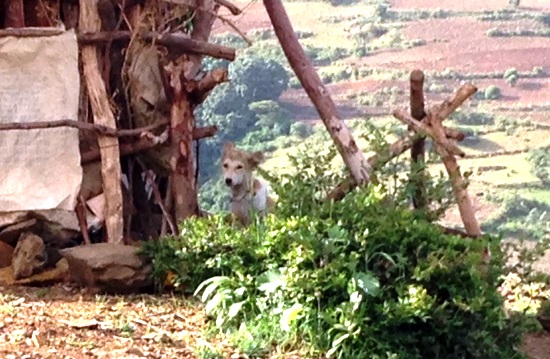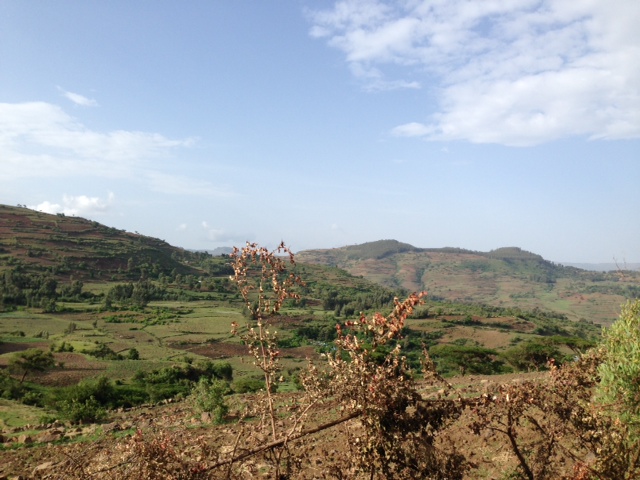By Ally Sterman, 2015 DVM and
Alexandra Medley, 2017 DVM and 2018 MPH/VPH
The Ohio State University
Our dog survey project takes us through various areas and communities in Gondar. Many of these areas are homes or rural communities that are heavily populated with families who have many children. As we walk around the areas, we quickly attract children. It is not common in many of these areas for individuals with white skin to pass through. When I was in Ethiopia the previous summer, in very, very rural communities children used to run and hide from us. This summer they run straight for us.
Often times we know they are coming for the screams of “you, you, you” or ” foreingee, foreingee.” Once they arrive, they begin to ask us our names, how we are and where we are from. Many will try to speak some English with us and others will suddenly become shy and run and hide. If you pull out a camera to take a picture, they also all hide but when we bring out the iPad to record data they become super interested in what we are doing. The brave ones come up and want to shake hands with us. Such a simple gesture brings a wide smile to their faces.
They have been very helpful, helping us identify what sex the dogs are, where they are and even bring them up to the front of the yards to help us see them better. In the suburban areas we had as many as 30 children following us and in the rural side entire small villages of children.
Interestingly, the local veterinarians have told us that the main breeding season is in the Ethiopian Spring (September by U.S. calendars), although we have seen many pregnant dogs and puppies. Despite our initial thought that each dog would be hard to tell apart, we have seen a variety of shapes, sizes, breeds and coat patterns. So far we have been able to casually determine that dogs are mostly found in the peri-urban, or housing, areas. Although dogs tend to remain in a small area, or territory, there are many friendly dogs that roam in groups.
 |
 |
 |
|---|
We have seen many different medical conditions in the dogs, such as lameness, ticks, fleas, fighting wounds, and malnutrition, but none of this was outside of what we expected. We have completed our two rural paths, that are high up in the mountains where there are less than 15 houses per path. We have seen many dogs there, but more incredibly, the stunning panoramas of Gondar from up high. This season heralds strong winds and rain, and sometimes we had to brace ourselves from falling over as we navigated hilly terrain. In a few more days, we will wrap up our dog survey.



